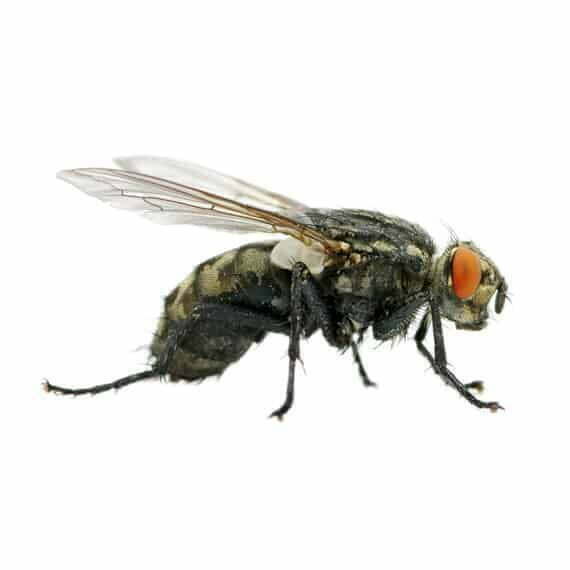
The housefly, Musca domestica is one of the most common of all insects. It is worldwide in distribution and is a pest in homes, barns, poultry houses, food processing plants, dairies, and recreation areas. It has a tremendous breeding potential and during the warmer months can produce a generation in less than two weeks.
Housefly eggs are laid in almost any type of warm organic material. Animal or poultry manure is an excellent breeding medium. Fermenting vegetation such as grass clippings and garbage can also provide a medium for fly breeding. The whitish eggs, which are laid in clusters of 75-100, hatch within 24 hours into tiny larvae or maggots. In 4 to 6 days the larvae migrate to drier portions of the breeding medium and pupate. The pupa stage may vary in length considerably, but in warm weather can be about three days. When the adult emerges from the puparium, the wings are folded in tight pads.
The housefly crawls about rapidly while the wings unfold and the body dries and hardens. Under normal conditions, this may take as little as an hour. Mating occurs immediately. A housefly may go through an entire life cycle; egg, larva, pupa to winged adult in 6 to 10 days. An adult housefly may live an average of 30 days. During warm weather 2 or more generations may be produced per month. Because of this rapid rate of development and the large numbers of eggs produced by the female, large populations build up.
Houseflies are strong fliers and can become widely distributed by flying, wind currents, vehicles, and animals. Generally, however, flies are abundant in the immediate vicinity of their breeding site. Under certain conditions, they may migrate 1 to 4 miles but are usually limited to one-half to 2 miles.
House flies feed by using sponging type mouthparts. As the fly moves about from one food source to another, it samples and eats its food by regurgitating liquid and dropping it on the food to liquefy it. Light colored spots called flyspecks are visible signs of this type of feeding. Darker flyspecks associated with houseflies are fecal spots.
The house fly’s feeding and breeding habits along with its persistence for invading homes and feeding on human food enable the house fly to spread many intestinal diseases such as dysentery and diarrhea. For pest control in Winnipeg choose GL pest control. See our services for insect control in Winnipeg.


